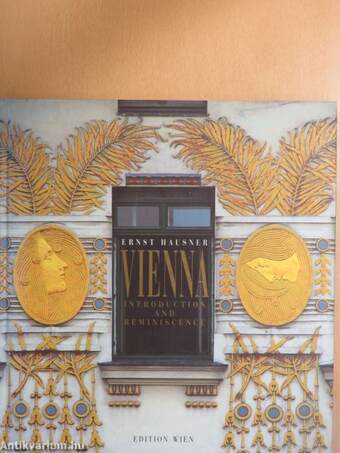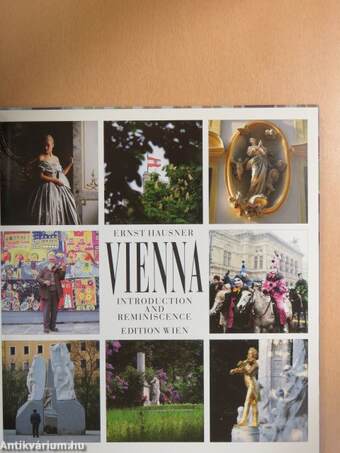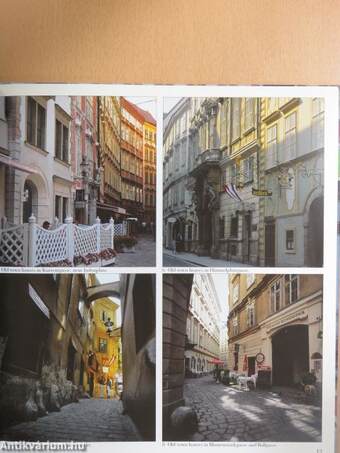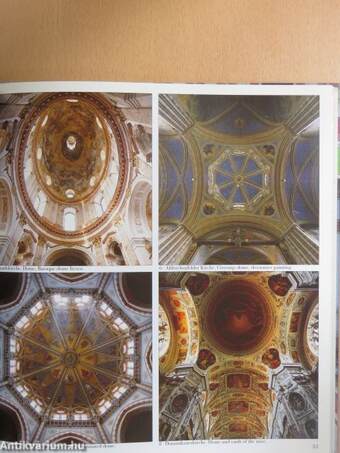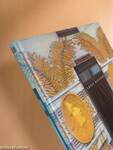1.067.378
kiadvánnyal nyújtjuk Magyarország legnagyobb antikvár könyv-kínálatát

VISSZA
A TETEJÉRE
JAVASLATOKÉszre-
vételek
Vienna
Introduction and reminiscence
| Kiadó: | Edition Wien |
|---|---|
| Kiadás helye: | Bécs |
| Kiadás éve: | |
| Kötés típusa: | Fűzött kemény papírkötés |
| Oldalszám: | 79 oldal |
| Sorozatcím: | |
| Kötetszám: | |
| Nyelv: | Angol |
| Méret: | 24 cm x 23 cm |
| ISBN: | 3-85058-001-6 |
| Megjegyzés: | Színes fotókkal. |
naponta értesítjük a beérkező friss
kiadványokról
naponta értesítjük a beérkező friss
kiadványokról
Előszó
"Vindobona" marked on a copy of a Roman road map, around 370. "Pcutingeriana", Nationalbibliothek.
Ever since prehistoric times, tlie Vienna Basin, a down-fault nestling between Alps and... Tovább
Előszó
"Vindobona" marked on a copy of a Roman road map, around 370. "Pcutingeriana", Nationalbibliothek.
Ever since prehistoric times, tlie Vienna Basin, a down-fault nestling between Alps and Carpathians, has been settled by humans. It was there that the "Amber Street", the trading route that linked the Baltic and Adriatic Seas, came upon the East-West route along the Danube. The continuity of settlement that survived the centuries and a location excellently suited to dominate its surrounding favoured the development of the region.
When the Romans moved their frontiers across the Alps, incorporating the Celtic kingdom of Noricum (including the area around Vienna) in their province of Pannonia in 15 BC, Vienna first entered die stage of history. The Danube served as the commercial and administrative border of the Roman Empire. "Vindobona" was established as a military camp in 100 AD. A network of roads was built to foster traffic and commerce; the municipiwn of Vindobona, a Roman civilian town near an ancient Celtic settlement, grew to more than 15,000 inhabitants.
Around 400 AD, Vindobona was destroyed under die onslaught of Germanic tribes. Over die next century, die Romans withdrew from Pannonia, with the Germanic tribes following hard on theirheels. Remains of the former military camp continued to be settled throughout die subsequent era of mass migration. In a steady battle with tribes from the East (Avars, Magyars, 955), die Carolingians from Bavaria succeeded in colonising die country and converting it to Christianity.
The Babenbergs, a colonising dynasty and margraves of the German Empire since 976, came to rule in Vienna around 1135, finally moving their court there in 1155 (and
were elevated to dukes in 1156). Recorded in die annals of 1137 as a regular community boasting a market and j udicial court(civitas), Vienna was a full-fledged urban centre already in die early 13 th century, leader in trade and culture and one of the great cities on the north side of die Alps. Surrounded by a wall and moat, it extended to approximately the size of today's inner city.
When the last Babenberg (Frederick II) died in 1246, the duchy and city fell to King Premysl Ottocar II of Bohemia. It was under his stewardship diat die Romanesque part of the Stephansdom and the oldest part of die Hofburg, the Schweizer Trakt, were built. In 1278, Ottocar II was felled battling King Rudolf I of Habsburg; as a consequence, "Austria below the Enns " and Vienna remained under Habsburg's rule for over 600 years.
The 14di century was a period of consolidation for the temporal powers, and it saw die growth of Gothic Vienna. The Gothic choir in the Stephansdom was completed, Duke Rudolf IV. in many ways die most remarkable and outstanding character of his time (Privilegium mains), laid the foundation stone to die nave and tower of die cathedral (1359) and founded a university in 1365. The charter of 1396 granted equal status to artisans, traders and patricians - diereby warding off from Vienna die fate of otiier cities where sanguine fights had broken out over die issue.
Family squabbles widiin the Habsburgs, disputes widi die citizenry of Vienna (execution of Mayor Vorlauf, in 1408, and Mayor Holzer, in 1463), political instability, an insecure grip of power on die part of Frederick III (1440 to 1493, Holy Roman
First record of "Wien" (last but one line, right-hand side). Salzburger Annalcn, 881. Stiftsarchiv Adinont.
mni-vx'caxu en grid cL>piwi'&cc<r ¦¦mjrr'i fht 1 uci're^ep z7'
f{ rkv Mu&:.r<UX0c>w>P' ^C'A-icu ailpdJ mutuprtfad i&nu'
ATtf d4 ?u1fvft&
Emperor as of 1452), and an economic decline accompanied die 15tii century. In 1485, Vienna capitulated to King Matthias Corvinus of Hungary, only to surrender to die Emperor again after the Hungarian's death.
In die 16th century, Central Europe was in die throes of Ludieran teaching, while its borders were simultaneously facing an ever more critical onslaught from die Turks. In 1522, die estates unsuccessfully rebelled against their souvereign (suppressed by die Court of Wiener Neustadt where Mayor Siebenbiirger was decapitated); and in 1526, a new charter abolished almost all die rights formerly enjoyed by Vienna. In 1529, the Turks lay siege to Vienna, only to be defeated, Becoming Imperial Residence again in 1533, Vienna gained in its standing by die new absolutism (Ferdinand I) and die introduction of centralised administration (Bohemia and Hungary). The medieval wall was replaced by bastions and glacis, which remained in place until die 19th century. Suburbs and villages sprang up outside die glacis, dominated by trade and industry.
In die first half of die 17di century, fanatic religious strife (around 1575, four out of five Viennese were Protestants) brought victory to die Catholic Counter-Reformation (Jesuits, Cardinal Khlesl), which was supported by die Empire. Numerous orders were called to Vienna, and their churches, built in die eai'ly Baroque style, have placed an indelible mark on the cityscape. hi 1679, a severe epidemic of the plague killed one third of the populace (a column commemorating die event was erected on die Graben).
Frederick Ill's charter granting a coat-of-arms to the City of Vienna, 1461. Scction. Wiener Landesarchiv. Vissza
Témakörök
- Idegennyelv > Idegennyelvű könyvek > Angol > Művészetek > Fotóművészet
- Idegennyelv > Idegennyelvű könyvek > Angol > Helytörténet
- Helytörténet > Külföldi > Városok
- Művészetek > Fotóművészet > Albumok > Tematikus
- Művészetek > Fotóművészet > Idegen nyelv > Angol
- Művészetek > Fotóművészet > Témái > Városok > Külföldi



